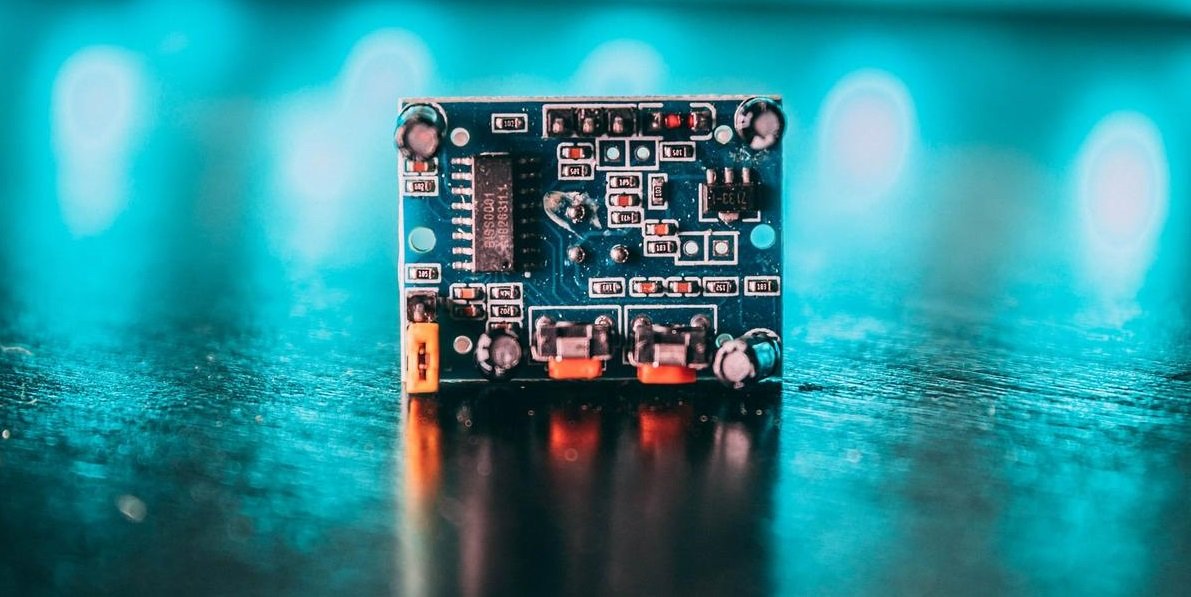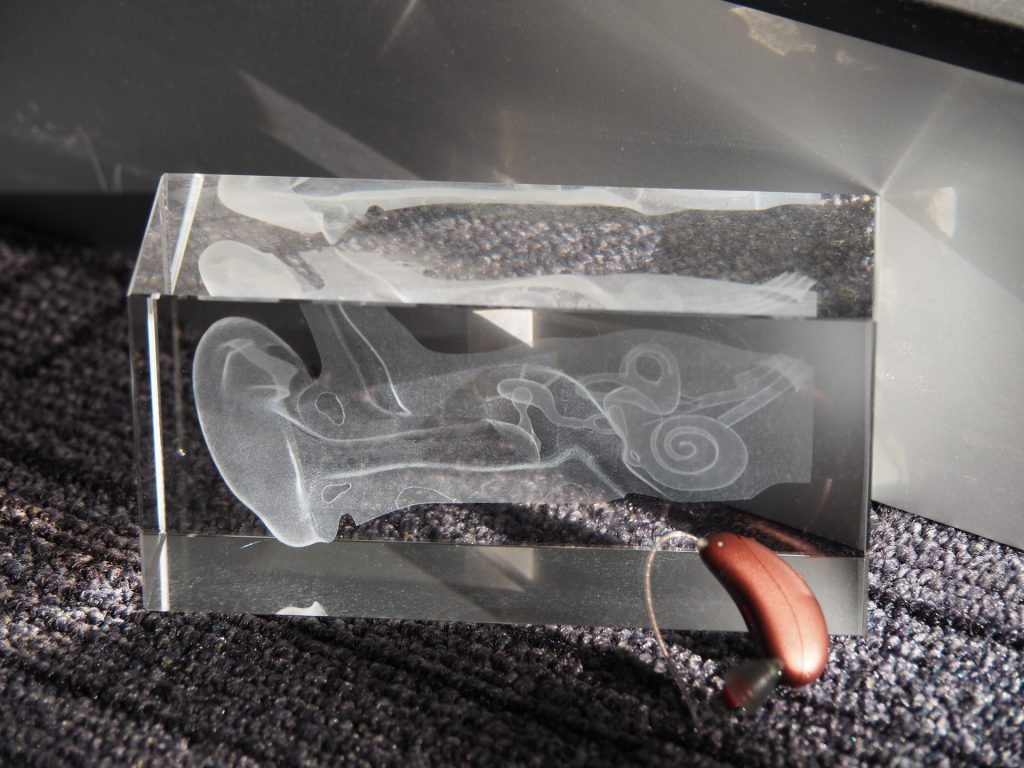How Hearing Aids Work – Breaking It Down

This article has been audited and reviewed by Dr. Ben Thompson, an audiologist and tinnitus expert. For more information about Dr. Thompson, click his name or read his bio below the article!
Thanks to hearing aids, people who suffer from hearing loss and damage are once again able to enjoy things like listening to music, conversing with friends, and other experiences that many take for granted. In 2016, almost four million hearing aids were sold in the United States alone.
These small devices can help rebuild (and in some cases, re-create) one important part of the vibrant and rich experience we call life. But, have you ever wondered how these small miracle creating devices work? In this article we’ll break down how hearing aids work and examine the finer details. Hopefully we’ll give you a newfound sense of respect for these pieces of amazing technology.
What is a Hearing Aid, And What Does It Do?
Before we jump into how hearing aids work, let’s just ask that basic question. Hearing aids are small electronic devices worn around the ear that amplify sound. They are designed to help those with hearing loss listen, communicate, and engage in normal daily activities that may be impeded by their weakened hearing.
Just like each individual’s hearing loss is different, each person’s hearing aid is also different. Hearing aids are programmed and tuned to match the wearers specific hearing loss, providing the best possible listening experience.
How Hearing Aids Work

Compared to hearing aids of old, current hearing aids have greatly evolved to the current marvel they are now. Although the individual components may be sophisticated, almost all hearing aids can be broken down into three main parts: a microphone, amplifier, and a speaker.
- The miniature microphone picks up sound from the environment, converts the sound waves into electric signals, and then sends them to the amplifier.
- The amplifier, which consists of a computer chip, boosts the strength of the signal before sending it to the speaker.
- The speaker receives this signal and then broadcasts the amplified sound into the user’s ear.
Inside our eardrum we have thousands of small hair cells – these hair cells are what pick up and amplify the sounds we hear, performing the process we call “hearing.”
When these hair cells are damaged they lose the ability to pick up sounds on specific frequencies. Hair cells in the inner ear specifically are unable to regenerate, so damage to them can cause permanent hearing loss and cripple a person’s ability to hear that specific frequency for life. This type of hearing loss is called sensorineural hearing loss.
However, with the help of the extra amplification of a hearing aid, those damaged hair cells are once again able to pick up the frequencies, restoring hearing ability. Which sounds and frequencies are amplified is based on the hearing aid settings programmed by an audiologist.
Analog Versus Digital Hearing Aids
While most hearing aids manufactured these days are digital, analog hearing aids are still produced. Usually less expensive than digital hearing aids, analog aids are built and programmed by a manufacturer based on specifications provided by an audiologist about a patient’s hearing. They have less flexibility than a digital hearing aid. However, they usually do have multiple programs or settings designed for different listening environments, such as small crowded rooms or large open halls.
Digital hearing aids, on the other hand, are not usually pre-programmed by the manufacturer. Because they are digital, they convert sound waves in numerical information, much like a computer. This information contains other information, such as volume and pitch. Therefore, a digital hearing aid has quite a bit of flexibility, allowing an audiologist to adjust it specifically for a person’s hearing needs.
Digital hearing aids also contain settings for multiple programs. Some digital hearing aids adjust programs automatically as environments change, and some even include remote controls so users can adjust the settings without having to remove the devices.
Do Hearing Aids Really Help?

For the vast majority of people with hearing loss, hearing aids are an effective treatment for hearing loss. For those with severe to profound sensorineural hearing loss in both ears, however, even the assistance of a hearing aid may not be enough. When the hair cells are too damaged, no amount of amplification will help regain hearing. Luckily there are options available aside from hearing aids, such as cochlear implants for severe to profound sensorineural hearing loss or bone anchored hearing aids for conductive or mixed hearing loss.
Aside from restoring hearing, hearing aids also come with a number of health related benefits as well! The effect of hearing loss on health is a topic that has increasingly come under the microscope in recent years, and new findings are showing surprising connections, such as links between hearing loss and depression.
Hopefully we’ve answered your question about how hearing aids work! For more information on hearing aids, hearing health, and all manner of related topics take a look around our blog.
Article edited by Dr. Ben Thompson – Au.D. (Audiologist)

Dr. Ben Thompson is an audiologist and tinnitus expert. Dr. Thompson is the founder of Treblehealth.com. He decided to specialize in tinnitus management because of his interests in mindfulness, music and psychology. He completed his residency at University of California at San Francisco (UCSF) and is a past board member of the California Academy of Audiology.
Via telehealth, Dr. Thompson provides tinnitus retraining therapy online. He hosts a YouTube channel, podcast, and tinnitus group coaching program to help individuals with hearing loss and tinnitus.
The information in this guide has been written using the following reliable sources:
Healthy Hearing, Hear usa, Mayoclinic.org, Hopkinsmedicine.org, Nidcd.nih.gov
The post How Hearing Aids Work – Breaking It Down appeared first on Olive Union.
 (708) 847-3208
(708) 847-3208





 Everyone has had or dealt with dry skin at some point in their lives. It can be caused by the environment, allergens, lifestyle decisions, and many other varying factors and can be quite a nuisance to deal with, even painful. Similarly, the same can be said for dry ears. Similar to how skin produces oil […]
Everyone has had or dealt with dry skin at some point in their lives. It can be caused by the environment, allergens, lifestyle decisions, and many other varying factors and can be quite a nuisance to deal with, even painful. Similarly, the same can be said for dry ears. Similar to how skin produces oil […] Web designer is a particularly accessible job for the hearing impaired as well, because most of the communication involved tends to be digital. Salary...
Web designer is a particularly accessible job for the hearing impaired as well, because most of the communication involved tends to be digital. Salary...


